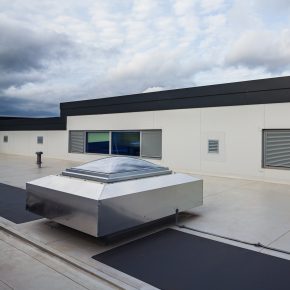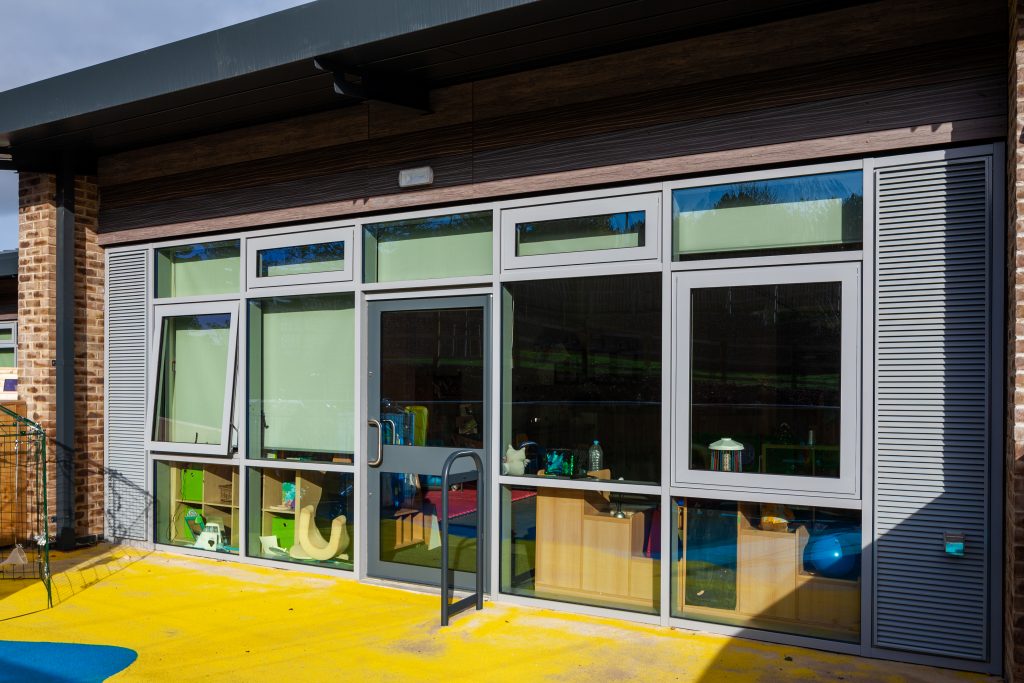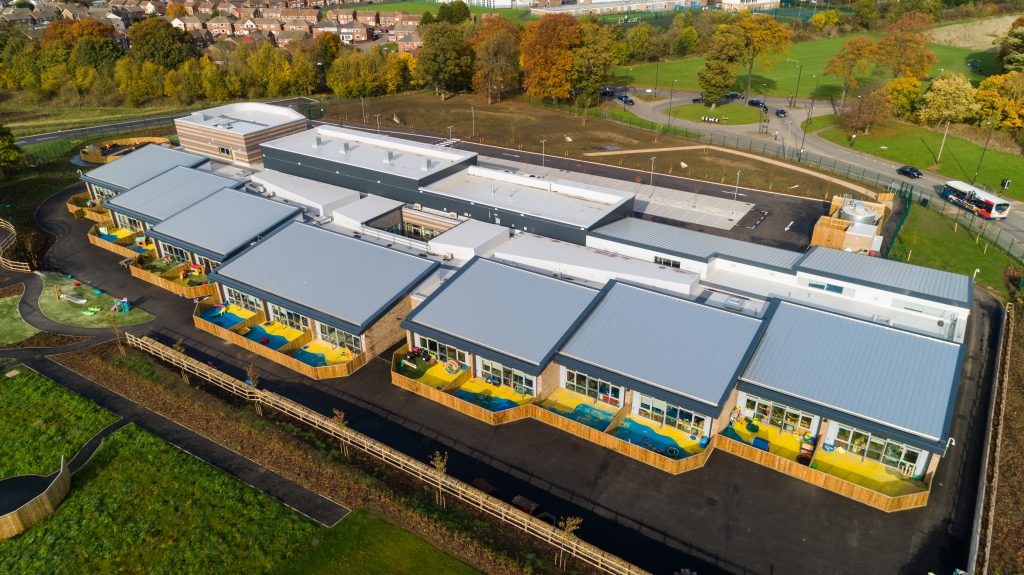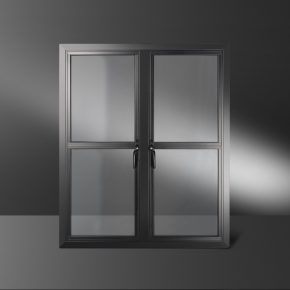
Passivent: Why natural ventilation makes the grade in education sector
Ensuring a flow of fresh air is a crucial part of creating a comfortable learning environment but, for the best results, discussions around ventilation strategies need to take place sooner rather than later. Huw Poppy, business operations manager at Passivent, one of the UK’s leading manufacturers of natural ventilation solutions, explains how supply chain collaboration and early engagement can help reduce the learning curve in the education sector…
Do your homework
“There’s much to consider when devising ventilation strategies for schools and these are outlined in Building Bulletin 101 ‘Guidelines on ventilation, thermal comfort and indoor air quality in schools’ and Building Bulletin 93 ‘Acoustic design of schools – performance standards’.
The new stricter targets on ventilation set out in Part F of the Building Regulations, must also be adhered to. As well as achieving compliance with these detailed documents, the chosen ventilation strategy should also contribute to a reduction in both carbon emissions and operational costs over the whole life of the building.
In accordance with BB101, ventilation in schools needs to be such that it achieves a daily average concentration of carbon dioxide of less than 1500ppm during the occupied period and should not exceed 2000ppm for more than 20 consecutive minutes each day at full capacity.
It’s also important that the building maintains an even temperature throughout the year with summertime thermal performance considered to prevent overheating.

The advantages of natural ventilation
Natural ventilation is the preferred choice over mechanical ventilation systems for educational settings for many reasons. By ventilating an internal space without the requirement of fans, natural ventilation offers a low energy system, reduced maintenance requirements and importantly, less noise pollution. This is a major consideration for all schools but particularly those with a high intake of SEND pupils and our recent work at Sunningdale School in Sunderland is a great example.
So how does natural ventilation work?
Essentially, it relies on natural forces including external-to-internal temperature difference, wind pressure and buoyancy – essentially the force that makes warm air rise. However, for natural ventilation to work effectively, it must be ‘designed in’ from the start to allow for cross flow of air, stacks and general planning of air paths and circulation throughout the building.
By reducing reliance on fans to ventilate a space, natural ventilation systems consume less energy and with stricter environmental targets and rising fuel costs, this is a major benefit.
There are various ventilation strategies which can be effectively used within educational settings, and understanding the fundamental principles of these will help specifiers select the most appropriate solution.

Cross ventilation uses controllable high-capacity inlets/outlets on two opposing building facades. It is suitable for spaces with a depth of up to five times the floor to ceiling height, while single-sided ventilation, where the air is brought in and extracted through the same façade, can be used in spaces with a depth of up to 2.5 times the floor to ceiling height.
Passive stack ventilation uses a combination of cross ventilation, buoyancy (warm air rising) and the venturi effect (wind passing over the roof terminals causing suction). Displacement ventilation uses wind driven roof mounted terminals with separated chambers to channel air down into the building regardless of wind direction.
This strategy is suited to taller spaces such as large atriums, sports, and dining halls rather than classroom areas. Of course, this is just an overview of a complex issue and is exactly why early engagement and close collaboration with ventilation specialists can be so beneficial.
Creating a comfortable environment
Natural ventilation systems can also help maintain a comfortable indoor temperature which is fully compliant with BB101 by tempering the incoming air. During summer months, night-time purging can be enabled to cool the building down, avoiding overheating the next day. And where there are high internal heat gains, natural ventilation can be used in conjunction with air conditioning where the system will work passively for as much of the year as possible and the cooling system will only be used when needed.”
Help is at hand
With over 40 years’ experience Passivent can offer design expertise and technical support to contractors, consultants or architects working on education projects that require a natural or hybrid ventilation strategy – creating comfortable learning spaces which won’t cost the earth.
To find out more, visit www.passivent.com, call 01732 850 770 or email [email protected]. Follow the company on LinkedIn to be kept up to date with the latest news.
Visit Supplier's page
Latest news

7th March 2025
ASSA ABLOY and Lorient Showcasing at the Fire Safety Event
ASSA ABLOY and Lorient are excited to announce their debut at the UK’s fastest-growing fire safety exhibition, the Fire Safety Event, taking place at the NEC, Birmingham, from 8 – 10 April 2025.
Posted in Access Control & Door Entry Systems, Architectural Ironmongery, Articles, Building Industry Events, Building Industry News, Building Products & Structures, Building Regulations & Accreditations, Building Services, Doors, Exhibitions and Conferences, Facility Management & Building Services, Health & Safety, Innovations & New Products, Posts, Restoration & Refurbishment, Retrofit & Renovation, Security and Fire Protection, Seminars
7th March 2025
Kent Company Wins Big With IronmongeryDirect’s TradeXtra Prize Draw
IronmongeryDirect, the UK’s leading online ironmongery specialist, is excited to announce the winner of its TradeXtra prize draw.
Posted in Access Control & Door Entry Systems, Architectural Ironmongery, Articles, Awards, Building Industry Events, Building Industry News, Building Products & Structures, Competitions, Doors, Innovations & New Products, Restoration & Refurbishment, Retrofit & Renovation, Security and Fire Protection, Videos
7th March 2025
Origin launches OW-70 Soho Window to revolutionise steel-look market
Origin, the UK’s leading manufacturer of premium aluminium windows and doors, has launched its groundbreaking OW-70 Soho Window.
Posted in Aluminium Products, Architectural Ironmongery, Articles, Building Industry News, Building Products & Structures, Building Systems, Doors, Glass, Glazing, Innovations & New Products, Restoration & Refurbishment, Retrofit & Renovation, Windows
6th March 2025
GEZE UK: Seeking Support at the National Fenestration Awards
GEZE UK is seeking support from industry professionals, clients and partners at the upcoming National Fenestration Awards, taking place on 25th October 2025, where the company is hoping to be shortlisted in five key categories.
Posted in Access Control & Door Entry Systems, Architectural Ironmongery, Articles, Awards, Building Industry Events, Building Industry News, Building Products & Structures, Building Services, Doors, Exhibitions and Conferences, Facility Management & Building Services, Health & Safety, Recruitment, Restoration & Refurbishment, Retrofit & Renovation, Security and Fire Protection, Windows
 Sign up:
Sign up: